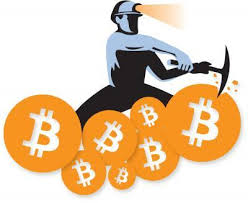Bitcoin’s Price Surge is Making Hobby Mining Profitable Again
Roque Solis never imagined the bitcoin mining equipment he bought in February would have already paid for itself. And on top of that, made him money.
Solis is the president of SoliSYSTEMS Corp, a company that developed an EMV smart card for electronic benefit transfer for the federal assistance program, Women, Infants, and Children (WIC). While attending several conferences last year, Solis was unable to ignore bitcoin. So, he decided to experiment with the technology via mining to get a better handle on whether the technology could be used within his company.
Solis bought a Bitmain Antminer S9 on eBay for $2,400.
As of this weekend, Solis has mined 1.01 BTC, worth a little more than $2,584 in his bitcoin wallet.
Solis said:
“When I bought the miner, the price per bitcoin was around $1,200. I thought I’d break even in one year, but actually it’s been about five months.”
These gains, though, are particularly interesting in that, even last year, individual hobby mining wasn’t profitable anymore. Individuals with just one or two miners couldn’t compete with the companies mining bitcoin using large warehouses full of servers dedicated to the task (and seeing lucrative returns as the price rose).
But that was with the price below $600, which, with electricity costs and mining pool fees, would take a person more than 500 days to break even on their bitcoin miner investment.
With an increased awareness and usage of mining pools, and the price now far higher, hobby miners – as Solis’ experience shows – can break even in several months.
According to Solis, the amount of money he’s making per day with the miner jumped from $7 to $16 recently, as the price shot up.
Price matters
And to bitcoin’s enthusiasts this is evidence that the increase really does benefit the network more broadly.
According to Sean Walsh, a partner at Redwood City Ventures, a bitcoin and blockchain consulting and investment firm. Walsh said, the rising bitcoin price has done more than reinvigorate investors, it’s also led to increased interest in bitcoin mining, a key process that supports the network by securing its ledger.
Walsh told CoinDesk:
“There are a lot of metrics that actually matter, like the number of people that own at least one bitcoin, but nobody cares about that. It’s just price. It’s the one score that wakes people up, and when The Wall Street Journal and other financial publications write about bitcoin.”
And the Google Trends for “bitcoin” and “bitcoin mining” tell a similar story. Many of the peaks in the chart for both terms coincide with spikes in price.
Yet, it’s not only the price per bitcoin that’s luring in new bitcoin mining hobbyists. According to Walsh, while bitcoin transaction fees were relatively stable for a long time, in the past couple years, those fees have seen an uptick.
“This has to do with the block size debate, because the network is a bit congested, and people are having to pay more to get their transactions confirmed,” he said.
Whereas only a few years ago, around 100 bitcoins per day was paid in transaction fees, in the past couple months, transaction fees have equaled around 350 bitcoins a day, Walsh said, pointing to stats on bitcoin data website Blockchain.info.
And with 1,800 bitcoins produced daily, 350 bitcoins is close to 20% of that. This is in stark contrast to a year ago when only 60 bitcoins were paid in transaction fees and 3,600 bitcoins were being produced daily (before the halving), making the percentage paid in fees around 1.6%.
“That’s a huge boost,” Walsh said.
He continued:
“I don’t know that [increasing transaction fees] are affecting people’s interest in getting into mining. People may not realize why it’s more lucrative to mine bitcoins now, but when they run the numbers, the payback period looks better than it used to.”
New blood
But those who have been in the cryptocurrency space for a while know this story, and would likely caution against Solis and others thinking that the upward momentum will continue.
Warning of future corrections, Walsh said:
“It’s very important for people entering bitcoin mining that they really understand how to calculate their revenue and expenses. They need to make sure their cost basis and operating costs are very low.”
For example, if new miners overspend on hosting servers, when there’s a correction, they’re over-leveraged. And that’s a cardinal sin in any investment, said Walsh.
Bitcoin was down about 20% over the last couple weeks of June.
Walsh called the downswings just “normal respiration of an asset class,” yet others not so versed in investing might be unaware of these fluctuations and get themselves in trouble.
For Solis, though, it’s all about learning through experience.
The Antminer S9 is running in SoliSYSTEM’s server room in the company’s office in Allen, Texas. Solis isn’t able to identify just how much electricity the miner is using, though, since there’s clusters of servers there already.
“It is noisy, though,” Solis said. “Compared to the other servers, it’s very noisy.”
And that’s because it’s a machine with two specialized ASIC boards, crunching numbers with a fan that rotates at 5,400–7,000 revolutions per minute, he said.
Solis isn’t only interested in bitcoin. Having been introduced to ethereum’s ether token and the network’s smart contract architecture, he had one of his employees buy some immediately via an online exchange several weeks ago. And he plans to start mining ether soon.
He’s also researching Hyperledger and other private blockchain systems.
All this, so he can better envision the use cases for his company. According to Solis, the company is looking into how blockchain could underpin a mobile, closed-loop electronic benefits transfer system.
Via: http://www.coindesk.com/bitcoins-price-surge-is-making-hobby-mining-profitable-again/

